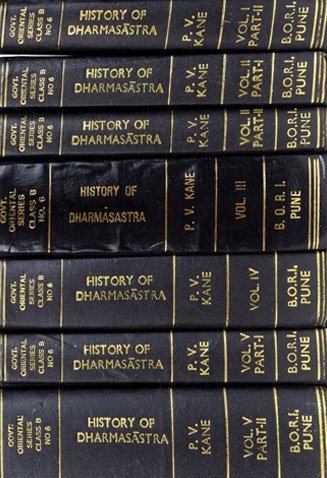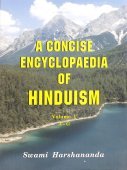Naradiyapurana, Nāradīyapurāṇa, Naradiya-purana: 6 definitions
Introduction:
Naradiyapurana means something in Hinduism, Sanskrit. If you want to know the exact meaning, history, etymology or English translation of this term then check out the descriptions on this page. Add your comment or reference to a book if you want to contribute to this summary article.
In Hinduism
Purana and Itihasa (epic history)
Source: archive.org: Puranic EncyclopediaNāradīyapurāṇa (नारदीयपुराण).—One of the eighteen Purāṇas. (See under Purāṇas).
Source: Shodhganga: Elements of Art and Architecture in the Trtiyakhanda of the VisnudharmottarapuranaNāradīyapurāṇa (नारदीयपुराण) refers to one of the eighteen Minor Puranas (i.e., Upapurāṇa) according to the Kūrmapurāṇa and other traditional lists of Puranic literature: a category of ancient Sanskrit texts which gives a huge contribution in the development of Indian literature.—The Upapurāṇas (e.g., nāradīyapurāṇa) can be considered as the supplements of the Mahāpurāṇas as those are mostly based on the Mahāpurāṇas. The Saurapurāṇa considers the Upapurāṇas as khilas i.e., supplements. [...] Though the numbers of Upapurāṇas are specified as eighteen, there are many important Upapurāṇas which are excluded from the lists of Upapurāṇas given by different sources.

The Purana (पुराण, purāṇas) refers to Sanskrit literature preserving ancient India’s vast cultural history, including historical legends, religious ceremonies, various arts and sciences. The eighteen mahapuranas total over 400,000 shlokas (metrical couplets) and date to at least several centuries BCE.
Dharmashastra (religious law)
Source: Shodhganga: The saurapurana - a critical study (dharma)Nāradīyapurāṇa (नारदीयपुराण) should be donated (dāna) on the fourteenth tithi according to the Dharmaśāstra taught in the 10th century Saurapurāṇa: one of the various Upapurāṇas depicting Śaivism.—Accordingly, the donation of the various Purāṇas to various recipients on different tithis along with the merits thereof are given in the ninth chapter.—[...] If a self-controlled person donates the Nāradīyapurāṇa to a Brāhmaṇa devotee of Śiva on the fourteenth tithi becomes honoured in Śivaloka.

Dharmashastra (धर्मशास्त्र, dharmaśāstra) contains the instructions (shastra) regarding religious conduct of livelihood (dharma), ceremonies, jurisprudence (study of law) and more. It is categorized as smriti, an important and authoritative selection of books dealing with the Hindu lifestyle.
Languages of India and abroad
Sanskrit dictionary
Source: Cologne Digital Sanskrit Dictionaries: Aufrecht Catalogus Catalogorum1) Nāradīyapurāṇa (नारदीयपुराण) as mentioned in Aufrecht’s Catalogus Catalogorum:—Jones. 407. [Mackenzie Collection] 46. Io. 398. 1007. 1799. W. p. 129. Oxf. 9^a. 11. L. 506. 1021. 1680. Khn. 28. K. 26. B. 2, 12. 16. 18. Report. V. Ben. 49. 52. 57. Bik. 206. 207. 225. Tu7b. 14. Kāṭm. 1. Pheh. 5. Rādh. 39. Oudh. Viii, 6. Ix, 4. Xiii, 42. Np. Vi, 34. Burnell. 188^a. 189^a. Bl. 2. Bh. 17. P. 9. Poona. 652. Ii, 39. 159. Taylor. 1, 126. 292. Oppert. 6066. 6832. 6952. 7345. Ii, 2605. 3061. 3210. 4678. 4762. 5217. Rice. 72. Mentioned in Kūrmapurāṇa Oxf. 8^a, in Varāhapurāṇa Oxf. 59^a, in Śivapurāṇa Oxf. 65^a, in Gaṇeśapurāṇa Oxf. 78^a, in Devībhāgavatapurāṇa Oxf. 79^b, in Tantrasāra Oxf. 95^a. Nāradapurāṇe Kārttikamāhātmya. K. 22.
—Dattātreyastotra.
—Pārthivaliṅgamāhātmya. W. p. 356.
—Puruṣottamamāhātmya. B. 2, 46.
—Mṛgavyādhakathānaka. Peters. 1, 118.
—Yādavagirimāhātmya. Burnell. 188^a. Taylor. 1, 293. Oppert. Ii, 645. 3524. 3764. 4117. 7718.
—Viṣṇumāhātmya. Burnell. 188^a.
—Śrīmuṣṇamāhātmya. Burnell. 188^a. Rice. 90.
—Saṃkaṣṭanāśanagaṇapatistotra. Laghu Bṛhannāradīyapurāṇa. Pheh. 5.
Nāradīyapurāṇa has the following synonyms: Nāradapurāṇa, Bṛhannāradapurāṇa.
2) Nāradīyapurāṇa (नारदीयपुराण):—Bl. 29. Hz. 62. Stein 202. Nāradapurāne 'dhikamāsamāhātmya. Peters. 4, 12.
—Kokilāvrata. Fl. 17.
—Kokilāvratodyāpana. Stein 202.
—Caturāśramadharmakathana. Stein 202.
—Phālgunakṛṣṇacaturthīvrata. L. 4221.
—Śrāddhavidhi. Stein 202.
Nāradīyapurāṇa has the following synonyms: Nāradapurāṇa, Bṛhannāradapurāṇa.
3) Nāradīyapurāṇa (नारदीयपुराण):—an Upapurāṇa. Cs 4, 265. Nāradīyapurāṇe Jñānakhaṇḍe Ahīndrapuramāhātmya. Thomas Append. p. 259.
—Kārttikamāhātmya. L.. 320, 2.
—Rukmāṅgadacaritra. Bc 114. Io. 950. Peters. 6, 163.
—Vṛṣotsargavidhi. Cs 2, 449.
—Haribhaktisudhodaya. Hpr 2, 265. Whish 80 (and C.).
Nāradīyapurāṇa (नारदीयपुराण):—[=nāradīya-purāṇa] [from nāradīya > nārada] n. Name of a, [Purāṇa] and an Upapurāṇa
Sanskrit, also spelled संस्कृतम् (saṃskṛtam), is an ancient language of India commonly seen as the grandmother of the Indo-European language family (even English!). Closely allied with Prakrit and Pali, Sanskrit is more exhaustive in both grammar and terms and has the most extensive collection of literature in the world, greatly surpassing its sister-languages Greek and Latin.
Kannada-English dictionary
Source: Alar: Kannada-English corpusNāradīyapurāṇa (ನಾರದೀಯ-ಪುರಾಣ):—[noun] = ನಾರದಪುರಾಣ [naradapurana].
Kannada is a Dravidian language (as opposed to the Indo-European language family) mainly spoken in the southwestern region of India.
See also (Relevant definitions)
Partial matches: Naradiya, Purana, Puraana.
Ends with: Brihannaradiyapurana.
Full-text (+26): Brihannaradiyapurana, Vanvantur, Upapurana, Dandaketu, Traipatha, Yavadahutasamplavam, Jananti, Caturashramadharmakathana, Bhaktisudhodaya, Naradiya, Kaukkuta, Ekadashyutpattikathanaka, Kokilavrata, Kokilavratodyapana, Prabodhinivrata, Bodhinivrata, Jagaccakshus, Bhishmapancakavrata, Samkataharacaturthivrata, Acchoda.
Relevant text
Search found 24 books and stories containing Naradiyapurana, Nāradīyapurāṇa, Naradiya-purana, Nāradīya-purāṇa; (plurals include: Naradiyapuranas, Nāradīyapurāṇas, puranas, purāṇas). You can also click to the full overview containing English textual excerpts. Below are direct links for the most relevant articles:
Haribhakti-sudhodaya (by Tridandi Sri Bhakti Prajnan Yati Maharaj)
Sanskrit sources of Kerala history (by Suma Parappattoli)
Bhajana-Rahasya (by Srila Bhaktivinoda Thakura Mahasaya)
Text 35 < [Chapter 1 - Prathama-yāma-sādhana (Niśānta-bhajana–śraddhā)]
Text 3 < [Chapter 1 - Prathama-yāma-sādhana (Niśānta-bhajana–śraddhā)]
Text 9 < [Chapter 4 - Caturtha-yāma-sādhana (Madhyāhna-kālīya-bhajana–ruci-bhajana)]
Bhakti-rasamrta-sindhu (by Śrīla Rūpa Gosvāmī)
Verse 1.2.129 < [Part 2 - Devotional Service in Practice (sādhana-bhakti)]
Verse 1.2.108 < [Part 2 - Devotional Service in Practice (sādhana-bhakti)]
Verse 1.3.17 < [Part 3 - Devotional Service in Ecstasy (bhāva-bhakti)]
Chaitanya Bhagavata (by Bhumipati Dāsa)
Verse 1.16.283 < [Chapter 16 - The Glories of Śrī Haridāsa Ṭhākura]
Verse 3.2.41 < [Chapter 2 - Description of the Lord’s Travel Through Bhuvaneśvara and Other Placesto Jagannātha Purī]
Verse 2.20.140 < [Chapter 20 - The Glories of Murāri Gupta]
Rivers in Ancient India (study) (by Archana Sarma)
11. The river Narmadā and its present status < [Chapter 6 - Changing trends of the Rivers from Vedic to Purāṇic Age]
5c. Image of Gaṅgā < [Chapter 5 - Rivers in the Purāṇic Literature]
6. The river Narmadā in the Purāṇas < [Chapter 5 - Rivers in the Purāṇic Literature]
Related products
